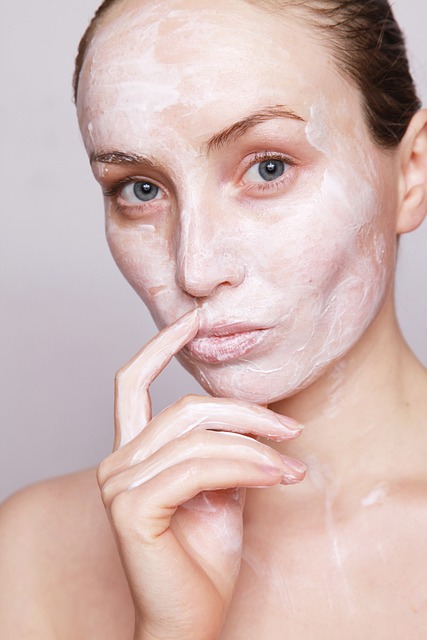Facial fillers, particularly nasolabial fold fillers, are a popular cosmetic procedure for smoothing and plumping skin around the nose and mouth ("smile lines"). The choice of filler (like hyaluronic acid, collagen, or calcium hydroxylapatite) is critical based on duration, consistency, and potential side effects. A qualified professional assesses your needs, cleans the area, injects filler in multiple small doses, and provides post-treatment care instructions to minimize risks and maximize results, including redness, swelling, and bruising resolution. Proper follow-ups and informed consent are essential for safe and effective management of facial filler procedures.
“Uncover the transformative power of Nasolabial Fold Fillers, a popular facial filler procedure aimed at rejuvenating the lower face. This comprehensive guide delves into the intricate world of these fillers, exploring their scientific basis and diverse applications. From understanding the nasolabial fold’s role to selecting the perfect filler, this article provides an authoritative overview. Learn about the step-by-step process, post-treatment care, and potential risks associated with Nasolabial Fold Fillers, empowering you to make informed decisions regarding your facial aesthetic.”
Understanding Nasolabial Fold Fillers: A Comprehensive Overview

Nasolabial fold fillers, commonly referred to as facial fillers, are a popular cosmetic procedure designed to enhance facial aesthetics. These fillers are injectable substances that smoothen and plump up the skin, specifically targeting the nasolabial folds – the creases or wrinkles running from the corner of your nose to the side of your mouth. By adding volume to this area, facial fillers can reduce the appearance of aging, improve facial symmetry, and create a more youthful look.
The choice of filler is crucial, as different substances offer varying levels of duration, consistency, and potential side effects. Commonly used fillers include hyaluronic acid, collagen, and calcium hydroxylapatite. Hyaluronic acid, for instance, is a natural substance that attracts and retains moisture in the skin, providing immediate results that can last up to 6-12 months. Understanding these options and their unique properties allows individuals to make informed decisions about their cosmetic procedures, ensuring they receive the best possible outcomes.
The Science Behind Nasolabial Fold Filler Procedures

The science behind nasolabial fold filler procedures involves advanced cosmetic techniques combining medical expertise and innovative products. These procedures aim to address the natural lines and folds that form around the nose and mouth, often referred to as the nasolabial folds or “smile lines.” By injecting facial fillers into these areas, dermatologists and aesthetic specialists can subtly enhance facial contours, reducing the appearance of aging and enhancing overall facial symmetry.
Facial fillers, such as hyaluronic acid or collagen-based products, are carefully selected based on their compatibility with human tissue and ability to provide natural-looking results. The filler is precisely injected into specific points along the nasolabial folds, acting as a temporary yet effective volume modifier. This strategic placement helps smoothen out the wrinkles and creases, creating a more youthful and rejuvenated appearance without drastic surgical interventions.
Benefits and Applications of Using Facial Fillers in the Nasolabial Region

Facial fillers have become a popular choice for those seeking to enhance their facial aesthetics, and the nasolabial region is no exception. This specific area, running from the side of the nose to the corner of the mouth, can benefit greatly from filler treatments. One of the primary advantages is its ability to reduce the appearance of fine lines and wrinkles, a common concern as people age. By adding volume and contour to this region, facial fillers can create a smoother transition between the nose and mouth, softening the overall expression and giving a more youthful appearance.
Additionally, nasolabial filler treatments are versatile and can be tailored to individual preferences. They can help define facial features, add definition to the jawline, or even balance out facial symmetry. This versatility makes them an appealing option for those looking to refine their look without undergoing surgery. With the right technique and product selection, facial fillers in the nasolabial region can provide long-lasting results, enhancing one’s natural beauty and boosting confidence.
Choosing the Right Filler for Your Nasolabial Fold Treatment

When considering nasolabial fold fillers, it’s crucial to understand that not all fillers are created equal. The right choice depends on several factors unique to your individual needs and goals. Firstly, consult with a qualified professional who can assess your specific condition and facial structure. They’ll recommend the best type of filler, be it hyaluronic acid, collagen, or synthetic materials, each offering distinct advantages. Hyaluronic acid fillers, for instance, are popular due to their natural composition and ability to attract and retain moisture.
Additionally, consider the depth of the nasolabial fold and your desired outcome. Some fillers are designed for subtle enhancements while others provide more dramatic results. The texture and consistency of the filler should also align with your expectations – smoother fillers might be better for natural-looking enhancements, while those with a slightly chunkier consistency can offer longer-lasting results. Always prioritize safety and choose FDA-approved products to ensure a successful and low-risk treatment experience.
The Process: What to Expect During a Nasolabial Fold Filler Session

During a nasolabial fold filler session, a qualified professional will begin by evaluating your facial structure and skin quality to determine the best type of filler for your needs. They will then clean the area to be treated and apply a topical anesthetic to minimize any discomfort during the procedure. The actual process involves carefully injecting the filler into the nasolabial folds, or the creases between your nose and mouth. This is typically done in multiple small injections to ensure even distribution of the product.
After the injection, the healthcare provider may gently massage the treated area to help smooth out any lumps or bumps caused by the filler. You can expect some mild redness, swelling, or bruising, which usually subsides within a few days. It’s important to follow post-treatment instructions, such as avoiding strenuous activity and direct sunlight, to promote optimal healing and minimize potential side effects of facial fillers.
Post-Treatment Care: Tips for Optimal Results

After receiving Nasolabial Fold Fillers, proper post-treatment care is essential for achieving and maintaining optimal results. It’s crucial to follow your dermatologist or healthcare provider’s specific instructions, but here are some general tips to aid in recovery and promote healthy, natural-looking results. First, avoid touching or rubbing the treated area to prevent infection and reduce swelling. Stay hydrated by drinking plenty of water, as it helps with overall skin health and can reduce potential side effects like dryness.
Sun protection is another vital aspect; always use a broad-spectrum sunscreen with at least SPF 30 when going outdoors to shield your skin from UV rays, which can cause hyperpigmentation or discoloration. Avoid strenuous activities or extreme temperatures for the first few days post-treatment to minimize bruising and discomfort. Additionally, be mindful of what you eat and drink; steer clear of alcohol, spicy foods, and excessive sugar, as these can delay healing and impact the final results.
Potential Risks and Side Effects: Being Informed About Nasolabial Fold Fillers

Nasolabial fold fillers, like all facial fillers, come with potential risks and side effects that every patient should be aware of before undergoing treatment. These can include temporary redness, swelling, bruising, or discomfort at the injection site. In rare cases, patients may experience more serious complications such as asymmetry, over-correction, or even migration of the filler to other parts of the face. It’s crucial for individuals considering facial fillers to understand these risks and choose a qualified and experienced provider who can mitigate them.
Properly informed consent involves discussing these potential outcomes openly with your doctor. They should provide detailed information about what to expect both immediately after the procedure and in the days or weeks that follow. Staying within an established timeframe for filler treatments and attending follow-up appointments are essential to managing risks effectively. This proactive approach ensures a safer and more satisfactory experience with facial fillers.
